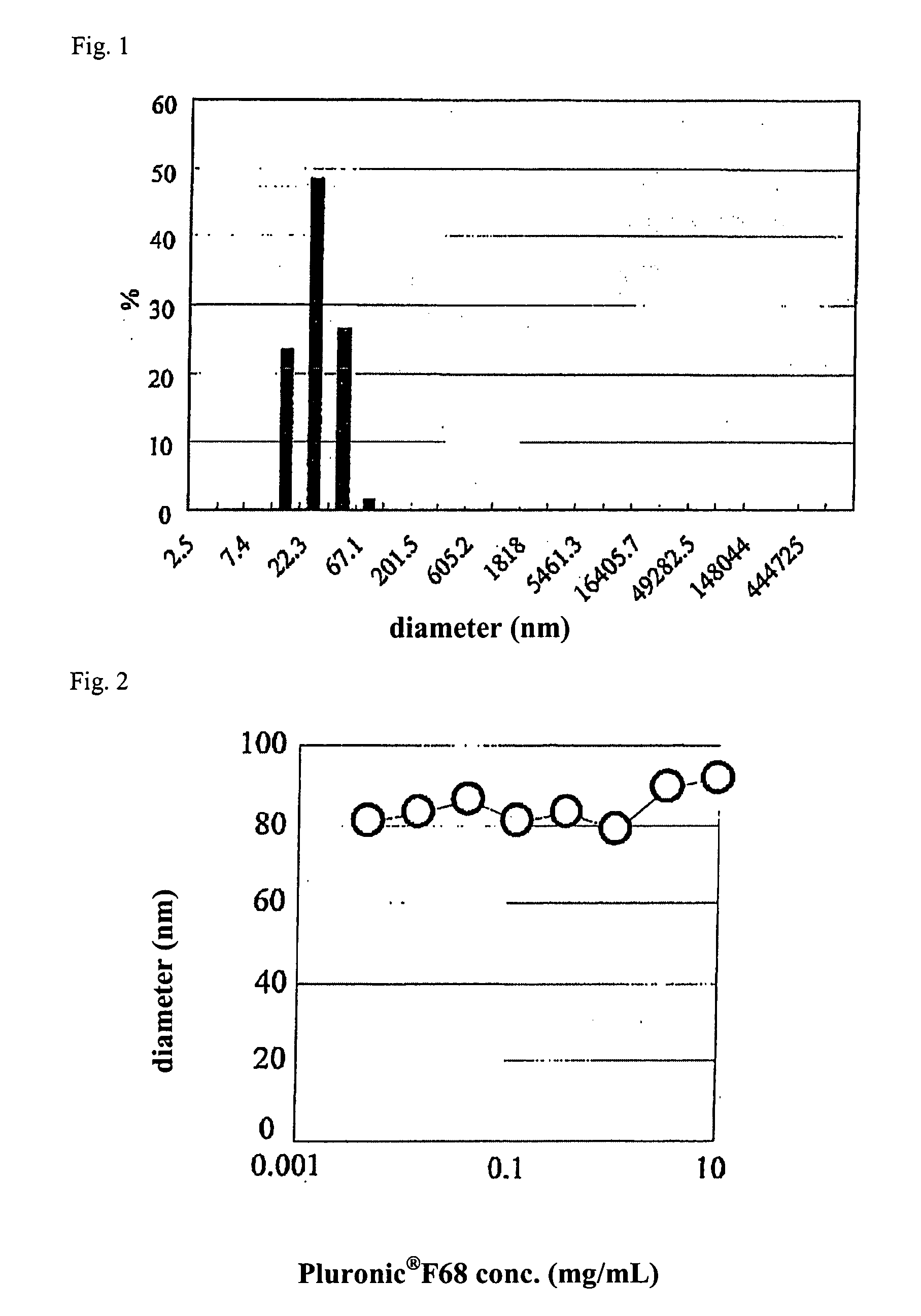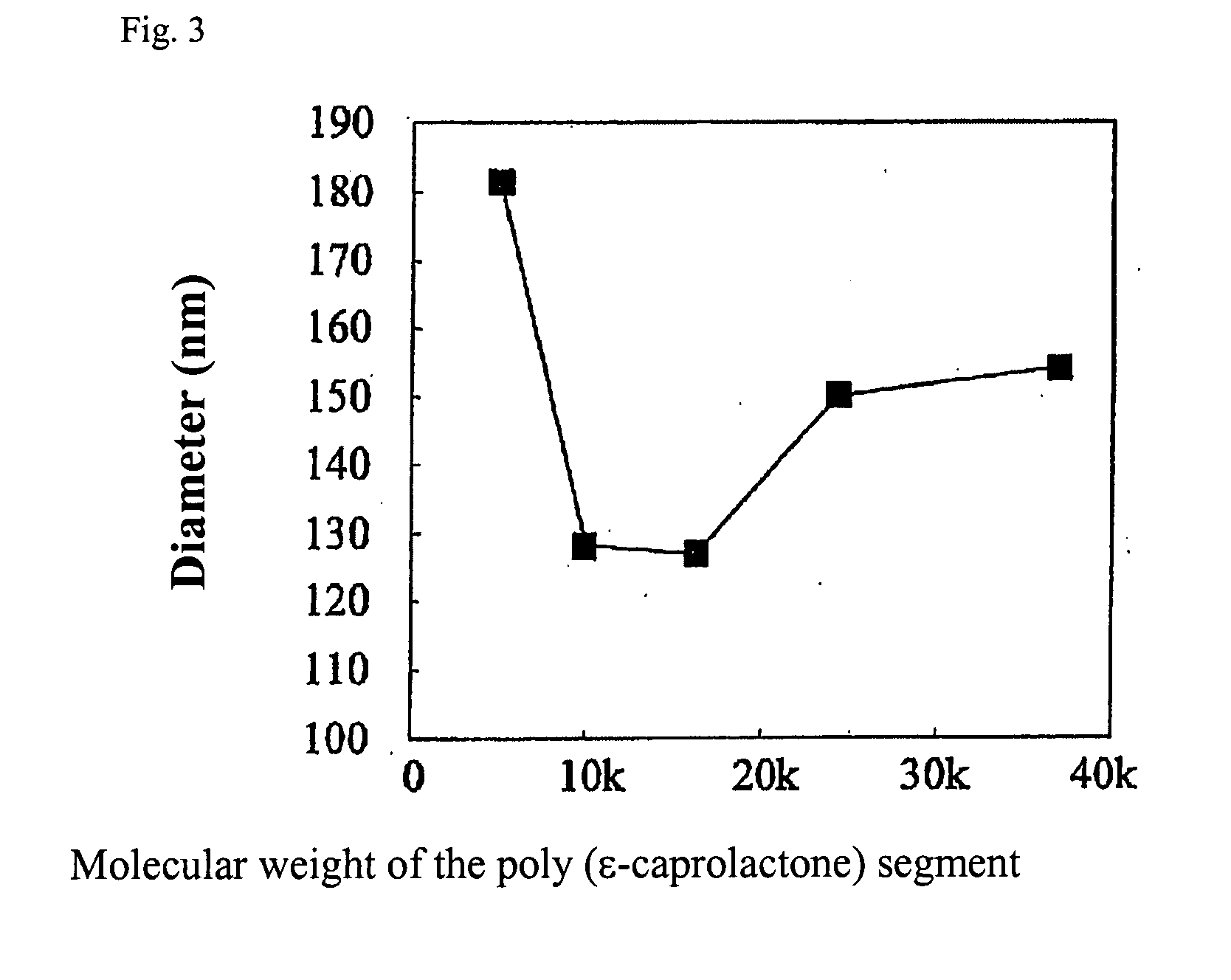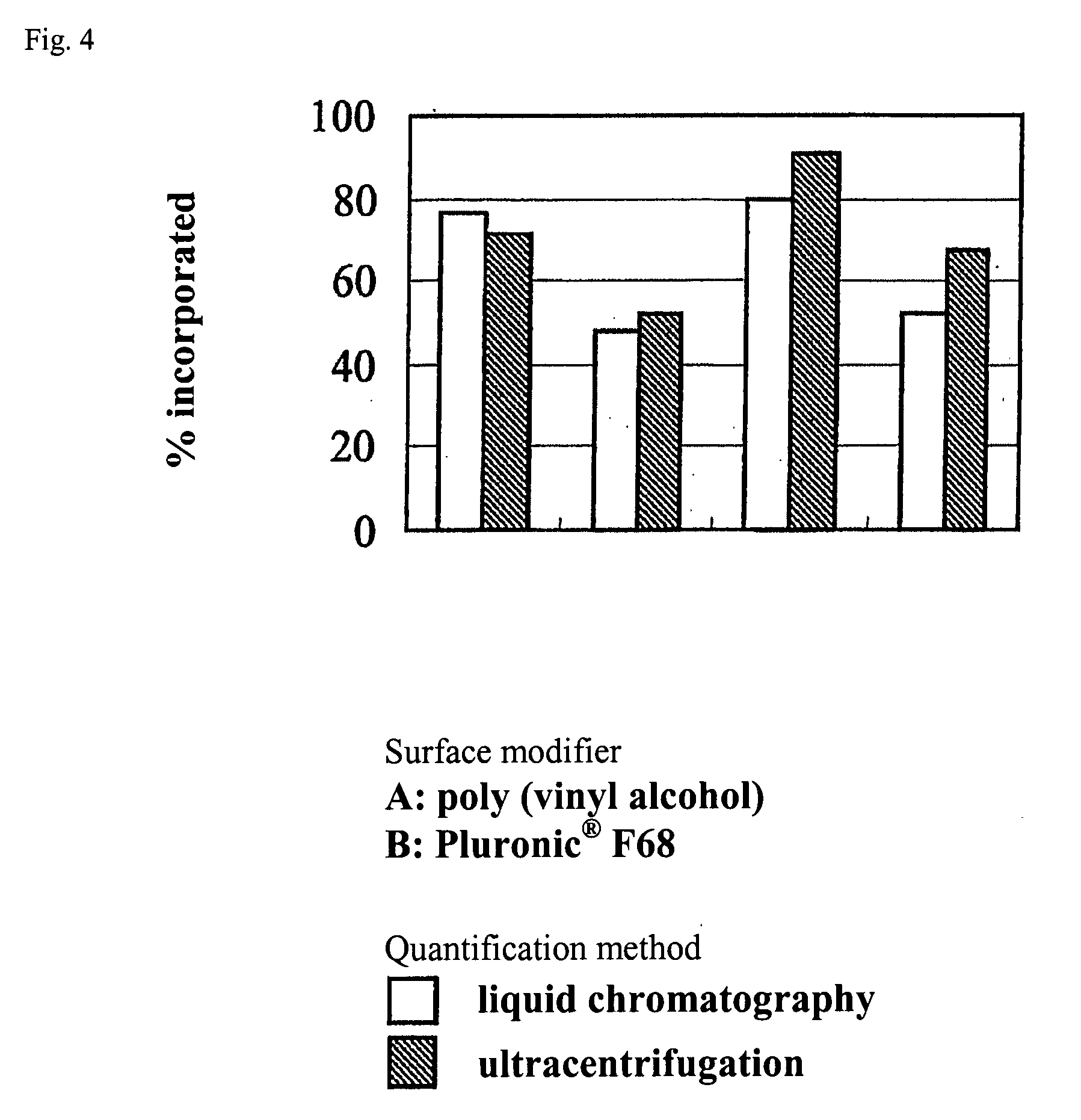Fine Particle and Pharmaceutical Preparation
a technology applied in the field of fine particles and pharmaceutical preparations, can solve the problems of poor drug enclosing efficiency of fine particles formed of lipids such as liposomes, difficult control of the release of enclosed drugs, and low efficiency of enclosing hydrophilic drugs in fine particles
- Summary
- Abstract
- Description
- Claims
- Application Information
AI Technical Summary
Problems solved by technology
Method used
Image
Examples
example 1
Manufacture of Fine Particles
[0128]10 mg of polyethylene glycol-poly(epsilon-caprolactone), which is an amphiphilic polymer, (molecular weight of polyethylene glycol is 5,000 and molecular weight of poly(epsilon-caprolactone) is 10,000) was dissolved in 500 μL of chloroform. This solution was added to 2 mL of hexane, chloroform mixed solution (hexane 1.6 mL, 0.4 mL), and a polymer solution was prepared. While the polymer solution was stirred at stirring speed of 1,600 rpm, and 10-100 μL of bovine serum albumin solution was dropped. The solution was stirred for 5 minutes, and fine particles were manufactured. The particulate dispersion solution was developed on a silicon wafer, and dried sufficiently in vacuum, and platinum was evaporated, and the particles were observed by scanning electron microscope (HITACHI S-4800).
[0129]Fine particles of several micrometers to hundred micrometers in diameter were observed. The shape of particles observed after drying was not contradictory to the...
example 2
Manufacture of Fine Particles
[0130]10 mg of polyethylene glycol-poly(epsilon-caprolactone), which is an amphiphilic polymer, (molecular weight of polyethylene glycol is 5,000 and molecular weight of poly(epsilon-caprolactone) is 10,000 or 37,000) was heated and dissolved in 100 μL of ethyl acetate. This polymer solution was stirred at stirring speed of 1,600 rpm, and 50-200 μL of horse radish peroxidase aqueous solution (1 wt. % horse radish peroxidase, 9 wt. % sucrose, 10 mM Tris-HCl pH 7.4) was dropped. The solution was further stirred for 1 hour, and fine particles were manufactured. The particle size of fine particles was measured by dynamic light scatter method by using apparatus Zetasizer 3000HSA (manufactured by Malvern Instruments). The obtained data was analyzed by CONTIN method and histogram method, and the particle size was calculated.
[0131]Fine particles of minimum number-average particle size of 25.1 nm were formed (FIG. 1). z-Average particle size was studied, and in p...
example 3
Manufacture of Fine Particles
[0132]10 mg of polyethylene glycol-poly(epsilon-caprolactone), which is an amphiphilic polymer, (molecular weight of polyethylene glycol is 5,000 and molecular weight of poly(epsilon-caprolactone) is 37,000) was dissolved in 2 mL of ethyl acetate, and a polymer solution was prepared. This polymer solution was stirred at stirring speed of 1,600 rpm, and 100 μL of 1 wt. % horse radish peroxidase aqueous solution was dropped. The solution was further stirred for 1 hour, and was added to 10 times in volume of dioxane. The solvent was evaporated, and the solution was concentrated to about 2 mL, and the particulate dispersion solution was added to phosphoric acid buffer solution (10 mL) adding Pluronic (registered trademark of BASF) F68 (PEO-PPO-PEO block polymer) at various concentrations. The particle size of fine particles was measured by dynamic light scatter method by using apparatus Zetasizer 3000HSA (manufactured by Malvern Instruments). The obtained da...
PUM
| Property | Measurement | Unit |
|---|---|---|
| mean particle size | aaaaa | aaaaa |
| mean particle size | aaaaa | aaaaa |
| mean particle size | aaaaa | aaaaa |
Abstract
Description
Claims
Application Information
 Login to View More
Login to View More - R&D
- Intellectual Property
- Life Sciences
- Materials
- Tech Scout
- Unparalleled Data Quality
- Higher Quality Content
- 60% Fewer Hallucinations
Browse by: Latest US Patents, China's latest patents, Technical Efficacy Thesaurus, Application Domain, Technology Topic, Popular Technical Reports.
© 2025 PatSnap. All rights reserved.Legal|Privacy policy|Modern Slavery Act Transparency Statement|Sitemap|About US| Contact US: help@patsnap.com



